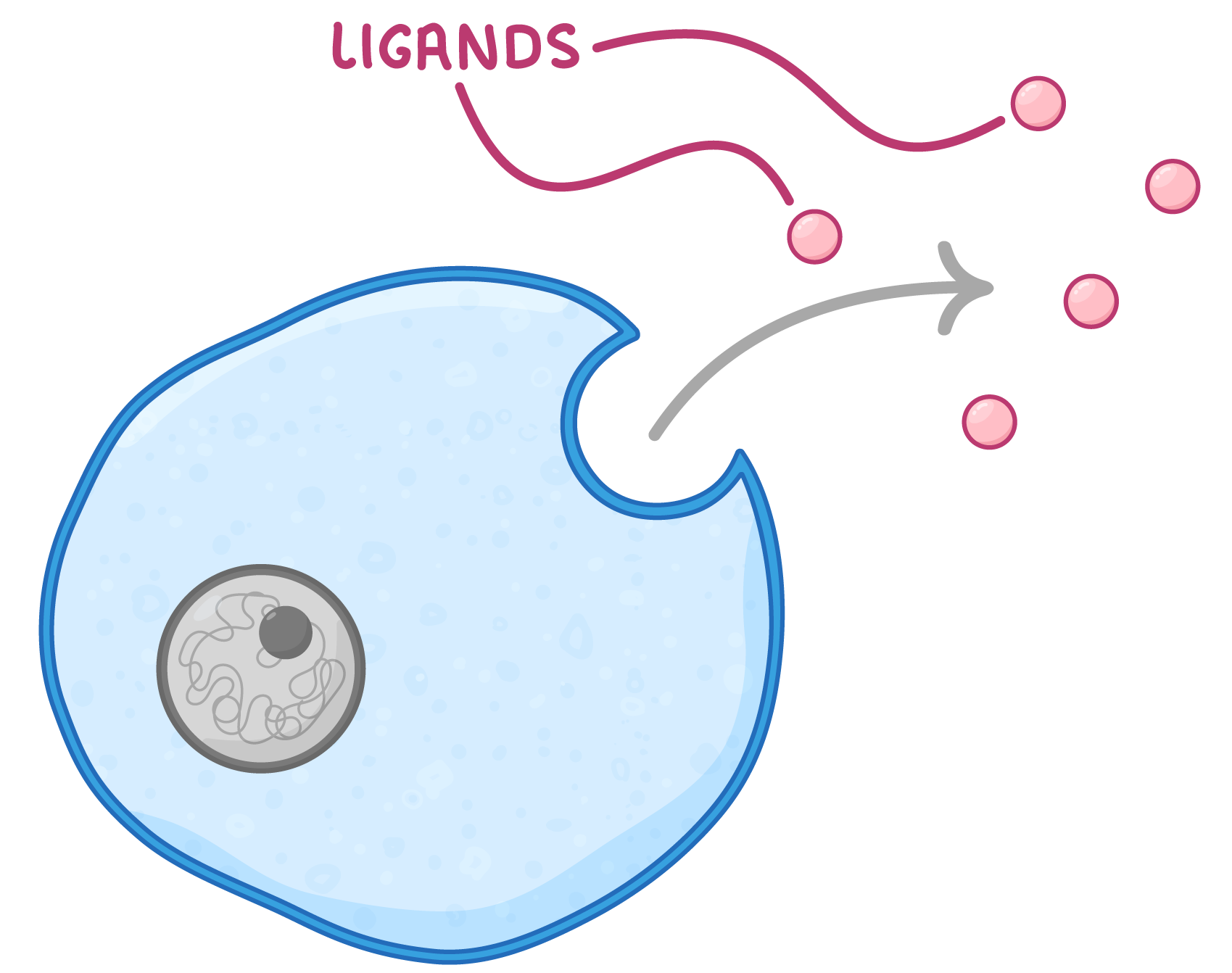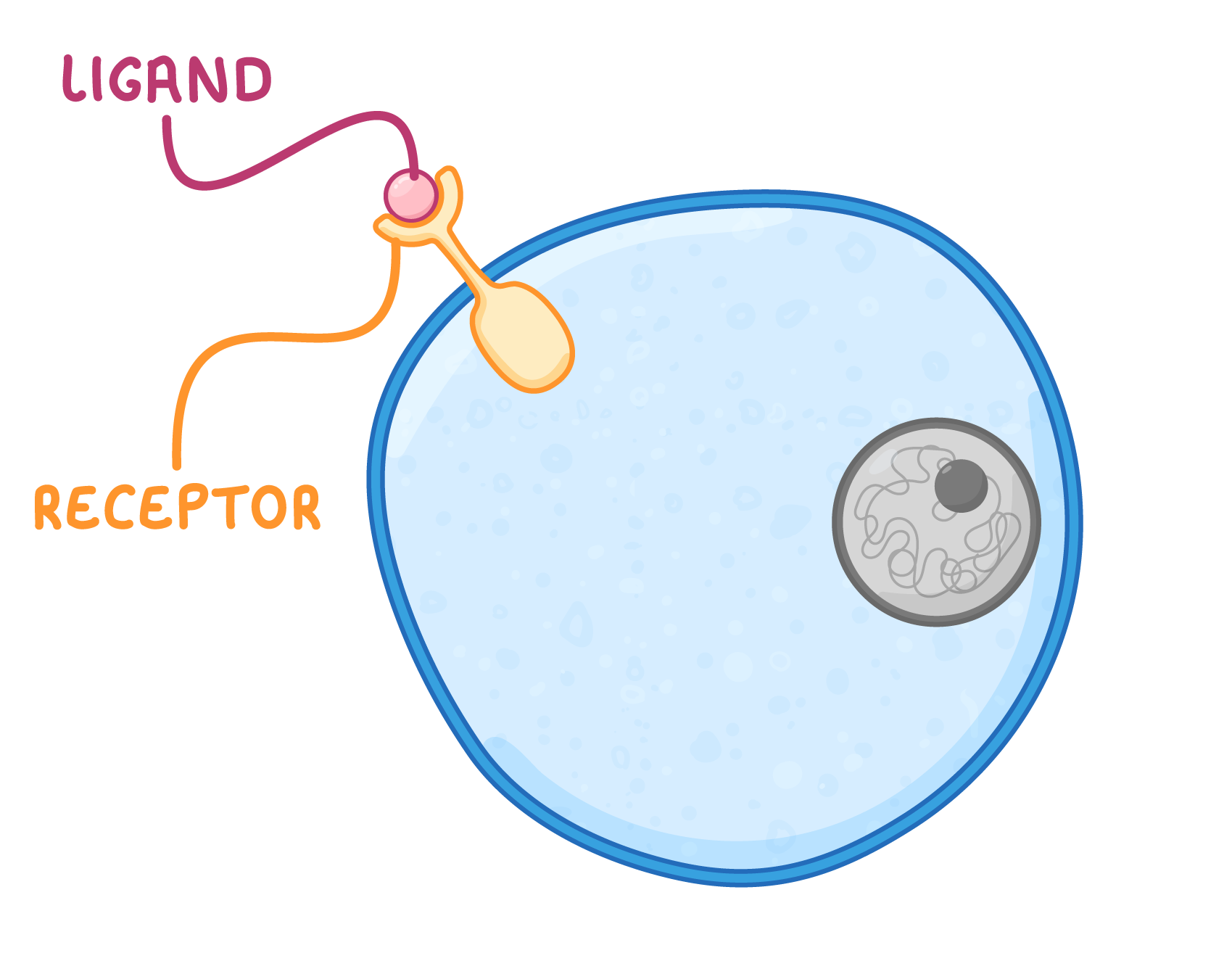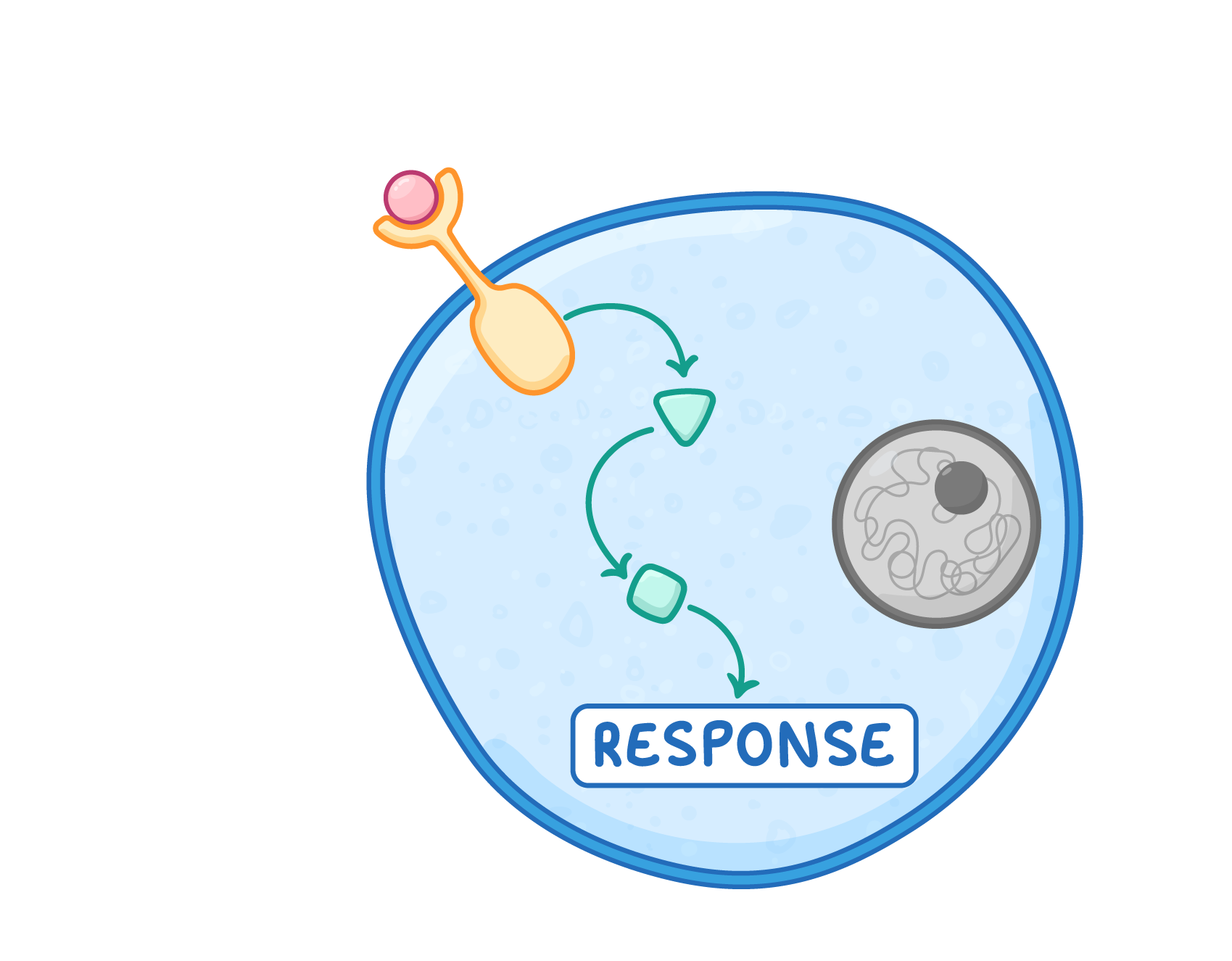Cell Signalling
This lesson covers:
- The process of cell signalling
Cell signalling Cell signalling is the process by which cells communicate with one another. The steps in this process are outlined below: |

|
 2. The ligand travels to target cells where it binds to cell-surface receptors. These receptors have a specific shape that is complementary to the ligand. |
 3. Binding of the ligand causes the receptor to change shape. This activates other molecules (usually enzymes) inside the cell to transmit the message and bring about a response. |